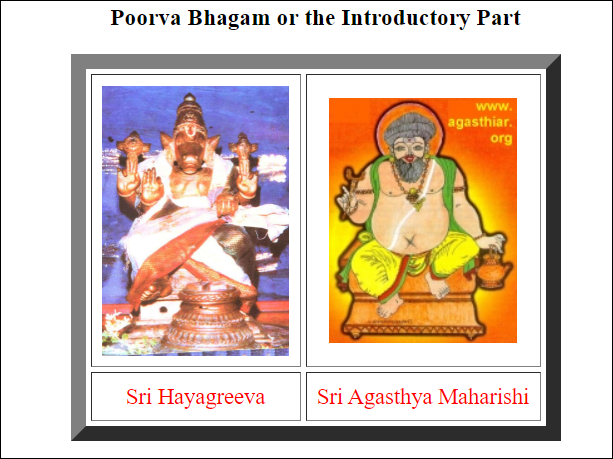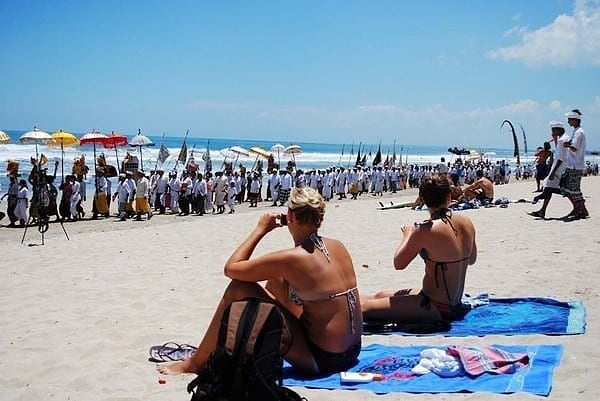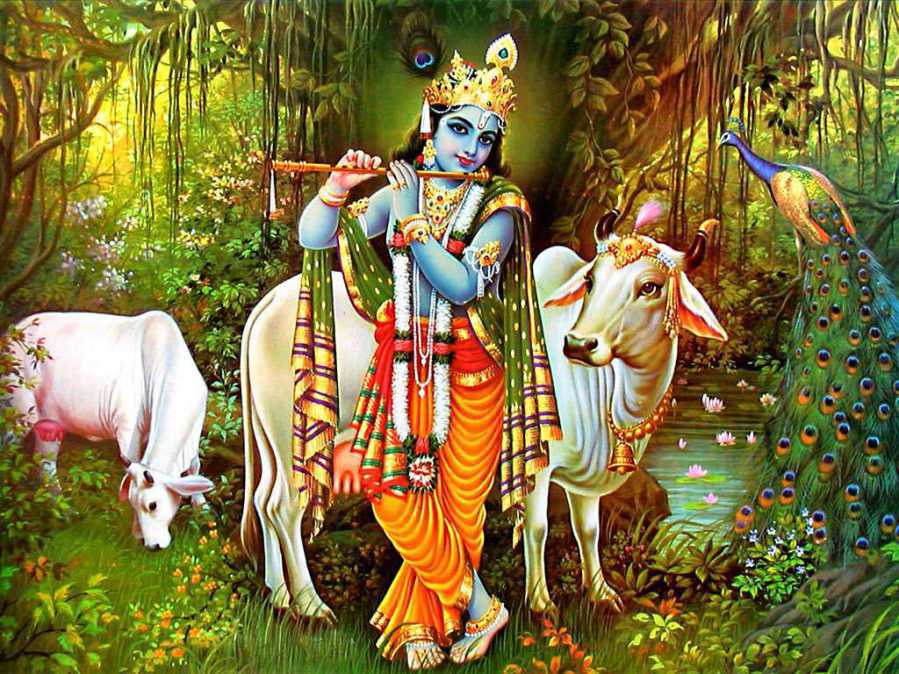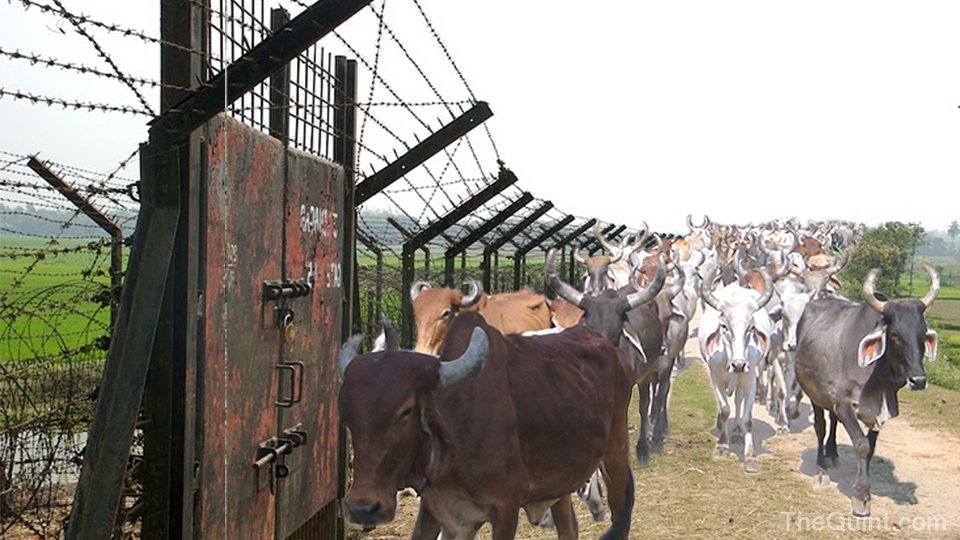Lalitopakhyana, part of 36th chapter of Brahmanda Purana gives the detailed account of Mother Lalitha, Her Origin & Her Deeds.
1. Sri Maatha
2. Mani pooraantharuditha
3. Sadgathi prada
4. Hrimkaari
5. Vividhaakaara
6. Gudanna preetha maanasa
7. Daraondolitha deerkhaakshi
8. Desa kaala paricchinna
9. Pushta
10. Naadaroopini
Musk thilaka on her forehead
Eyelids which appeared as if it is the gate of the house of God of love
Eyes like fish playing in the beauteous lake of her face
Nose with studs which shined more than the stars
Cheeks which were like mirror of Padmaraga
Beautiful white teeth
Chewing Thamboola with camphor
Voice sweeter than the sound emanating from Veena of Sarswathi
A beautiful smile that Lord Shiva himself could not take his eyes off
Breasts which were capable of buying the invaluable love of Kameswara
Having row of faint beautiful hair raising from her belly & stomach with three pretty folds, wearing red silk tied with a string with red bells
Feet which resembled the lamps made of gems which could dispel worries from the mind of
Lalithambika was given in marriage to Lord Kameshwara and made to stay in Sree Nagara at the top of Maha Meru Mountain.
The Poorva Bhaga talks about its origin. The Uttara Bhaga gives details of the benefits of this recitation.
Maharishi Vyasa then conveyed it to the world.
Being overjoyed by the conversation with Hayagreeva & out of the curiosity & anxiety to know it.
Om Aim Hreem Sreem Sri Mathre Nama
Sowbhaagya Bhaaskaram
Puja to Lalita Devi is to be done in the morning in the creative center, Rajashyamala in the heart during midday, Varahi in the evening at the eyebrow centre, .........
Here I’m not going in the details of Puja.
The Sri Chakra is deemed to be the map of the Universe; the ultimate periodic table of spirituality.
9.The Sri Chakra starts with a Center, the Bindu, a dimensionless point. It is the seer; never seen.
8.Surrounding that is the first triangle, the seen, which includes the seer.
These are the main circles or subsets of the Sri Chakra. The Sri Chakra is composed of 3 sets of
The 14 cornered figure, the 10 cornered figure and the other 10 cornered figure represent the Sthiti, the maintenance.
The BinduThe center of every experience is yourself. That is Siva, called the invariant point. The word bindu means three things: point, seed & mind. All that is experienced is Shakti.
They are -
Maithuna (Sex) – With multiple Yoginis for practices
Madya (wine)
Mamsa (meat)
Matsya (fish)
Mudra
Is Vamachara marga Dharmic? Still a big question.
vAmAchAraM parityajya pUjanaM vA japa~ncharet.
sa gachchhennarakaM ghoraM yAvadindrAshchaturdasha..
"The one who is doing puja or japa [of Devi] without Vamachara, goes to the terrible hell for a period of 14 lives of Indra."
Satyalok
Taplok
Gyanlok
Maharlok
Anandlok, which is Swarglok
Bhuvarlok
Bhulok........where we live and read our tweets....
Thread Completed!
Om Shanti Shanti Shanti hiii:























